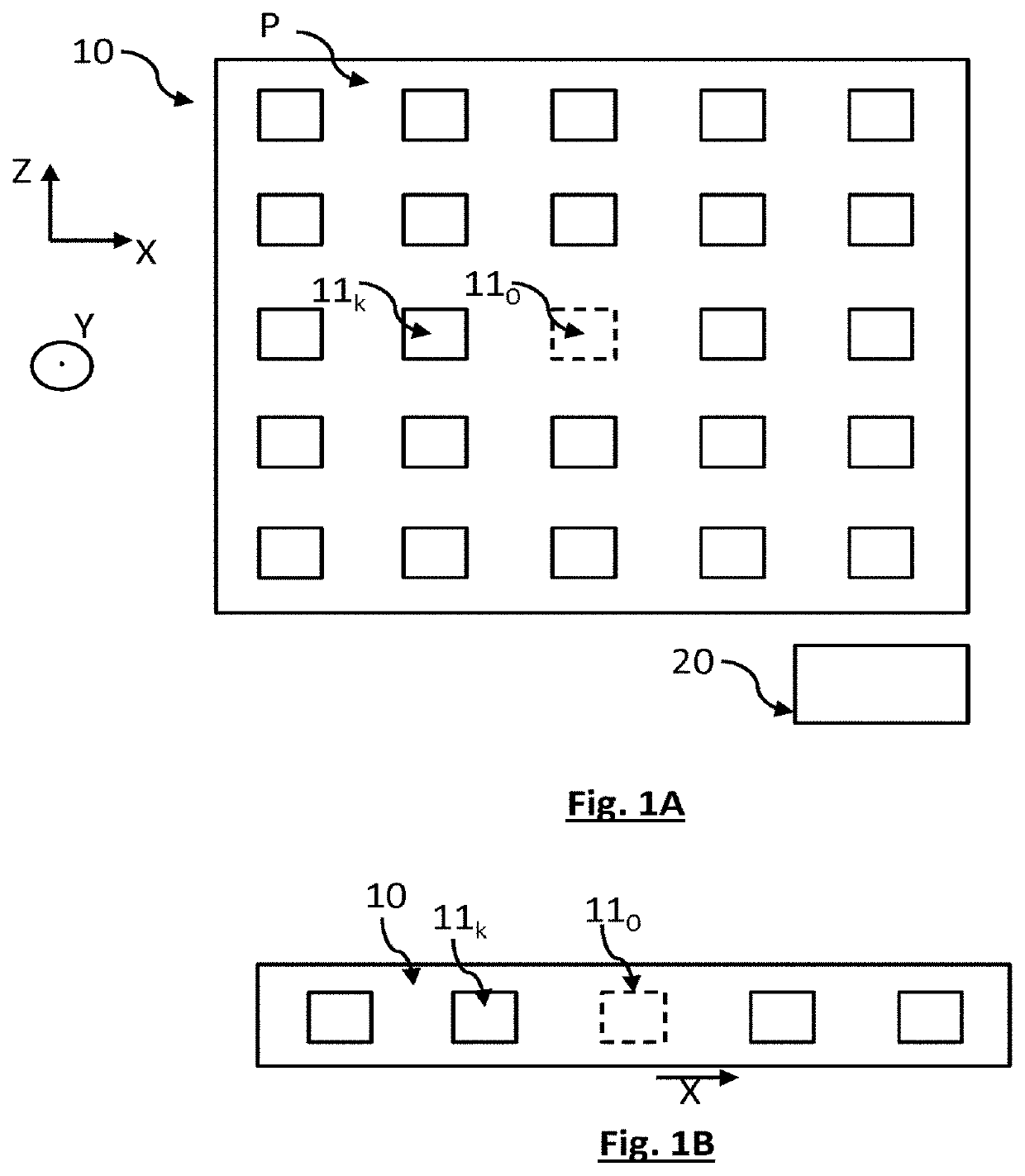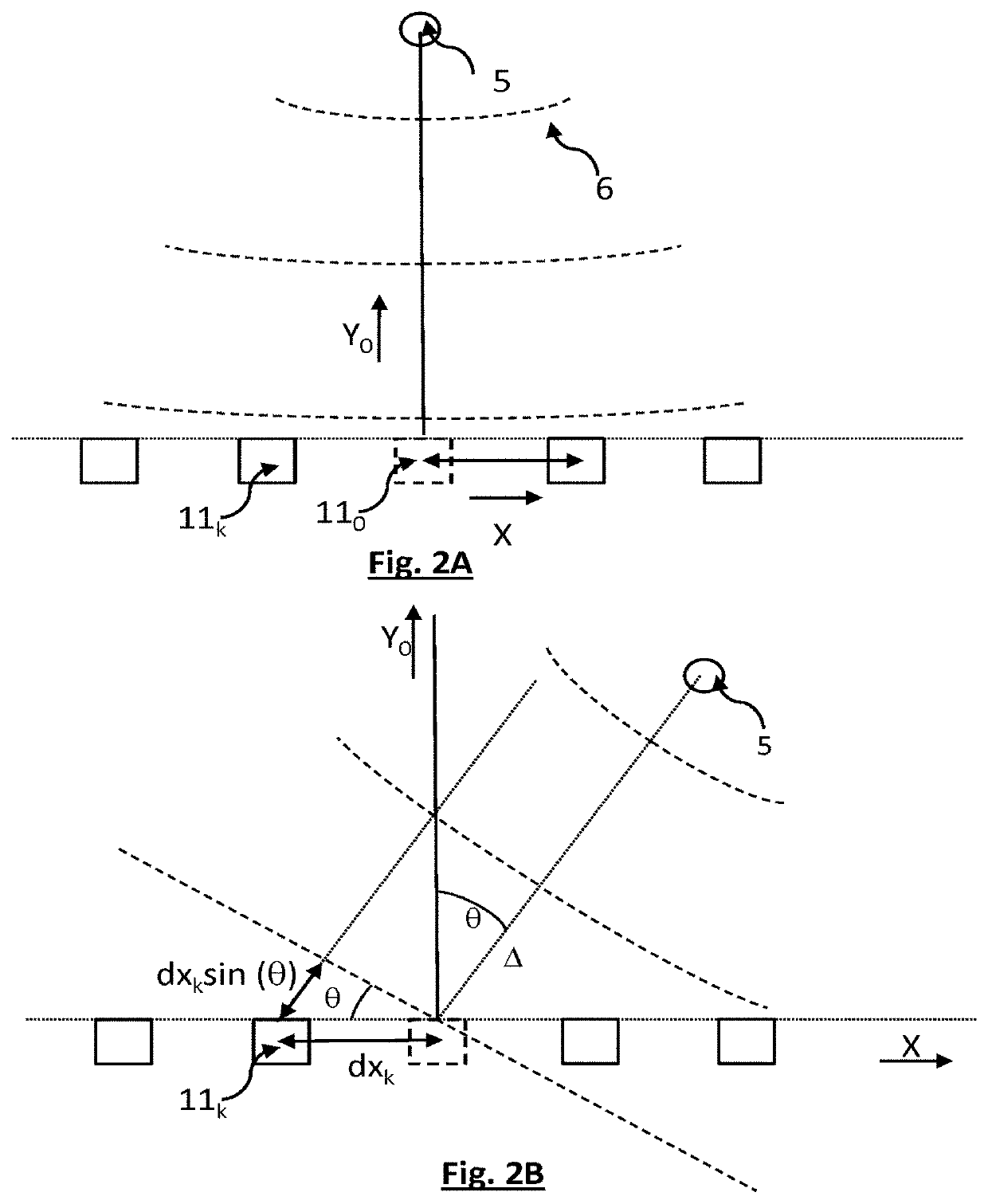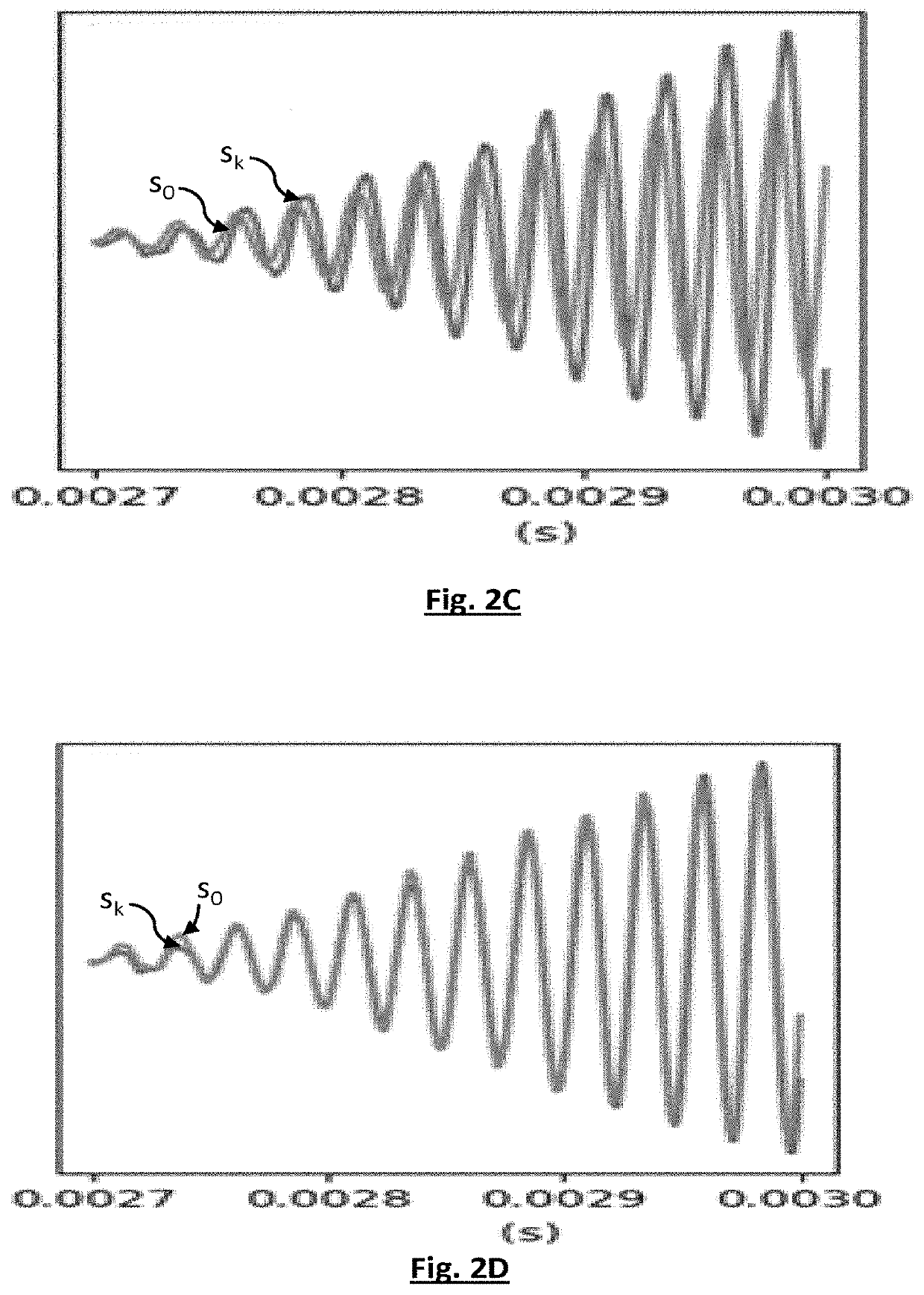Method for calibrating an acoustic antenna
a technology for acoustic antennas and antennas, applied in the field of methods for calibrating acoustic antennas, can solve problems such as imperfections, gain and phase of various transducers may exhibit substantial differences, and the manufacturing cost of the product is reduced
- Summary
- Abstract
- Description
- Claims
- Application Information
AI Technical Summary
Benefits of technology
Problems solved by technology
Method used
Image
Examples
Embodiment Construction
[0044]FIG. 1A shows a planar acoustic antenna 10. Such an antenna comprises elementary acoustic transducers 11k distributed over an antenna plane P. The elementary transducers are distributed over the antenna plane, about a reference transducer 110. The antenna plane P extends along a longitudinal axis X, defining rows, and along a lateral axis Z, defining columns. The antenna plane P is orthogonal to an axis Y. The longitudinal axis X and the lateral axis Z are secant, and preferably perpendicular to each other. The antenna 10 comprises a main axis Y0, perpendicular to the antenna plane P, and passing through the reference transducer 110.
[0045]The antenna 10 is connected to a processing unit 20, a processor or microprocessor for example. The processing unit 20 receives the signals generated by each transducer of the antenna, via a wired or wireless link. The processing unit is configured to execute certain steps of a calibration of the antenna, in particular when these steps requir...
PUM
 Login to View More
Login to View More Abstract
Description
Claims
Application Information
 Login to View More
Login to View More - R&D
- Intellectual Property
- Life Sciences
- Materials
- Tech Scout
- Unparalleled Data Quality
- Higher Quality Content
- 60% Fewer Hallucinations
Browse by: Latest US Patents, China's latest patents, Technical Efficacy Thesaurus, Application Domain, Technology Topic, Popular Technical Reports.
© 2025 PatSnap. All rights reserved.Legal|Privacy policy|Modern Slavery Act Transparency Statement|Sitemap|About US| Contact US: help@patsnap.com



